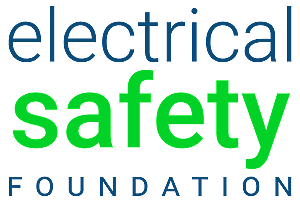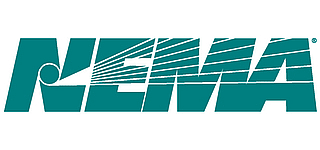Learn how to avoid electrical hazards while tidying or improving your home this spring.

The arrival of spring and warmer weather brings a renewed focus on home improvement and spring cleaning projects. Before completing any projects, review ESFI’s tips below to ensure these activities do not result in injuries or deaths.
ESFI’s website, esfi.org, offers a variety of free resources and information that can be shared with your family, community, and workplace. Follow these basic guidelines to help prevent serious electrical and fire hazards during DIY and spring cleaning projects:
Overhead Power Lines
Before starting any outdoor projects this spring, be aware of where overhead power lines are located outside your home. Whether you’re working on the roof, trimming trees, or painting your siding, it’s your job to be aware and alert others about nearby power lines.
- Locate all overhead power lines.
- Stay at least 10 feet away from overhead power lines.
- Do not touch anything in contact with power lines.
- Carry ladders and equipment horizontally to avoid bumping into the lines.
- Stay at least 35 feet away from downed power lines and call 911 if you encounter one.
Extension Cords
Using extension cords properly is critical to your safety. With continuous use over time, an extension cord can rapidly deteriorate, creating a potentially dangerous electric shock or fire hazard. Stay safe from electric shock and electrical fires with the following tips:
- Do not overload extension cords or allow them to run through water or snow on the ground.
- Heavy reliance on extension cords is an indication that you have too few outlets to address your needs. Have additional outlets installed where you need them.
- Make sure the extension cord or power strip you’re using is rated for the products you’re using and is marked for either indoor or outdoor use.
- The appliance or tool that you are using the cord with will have a wattage rating on it. Match this up with your extension cord, and do not use a cord that has a lower rating.
DIY Safety
Planning any DIY home projects? Some projects, such as installing ceiling fans or dimmer switches, you may be able to tackle, while other electrical projects should be left to qualified electricians. Never attempt a project that is beyond your skill level. Knowing when to call a professional can prevent electrical fires, accidents, and electrocution.
Before you complete any projects, start by labeling your electrical panel. Keep your home up to code by understanding and labeling your home’s electrical panel. This will also make it easy to turn off power to a specific section of your home for an emergency or electrical work.
- Locate the main circuit breaker.
- Turn off ALL breakers EXCEPT the main breaker.
- Ensure there is no power in the house.
- Turn on one breaker at a time, see which lights in the home turn on.
- Using a label maker, mark which area in the home the breaker is associated with.
- Large appliances such as dishwashers, air conditioners, water heaters, and ranges may have their own breaker.
ABOUT ESFI
The Electrical Safety Foundation International (ESFI) sponsors National Electrical Safety Month each May to increase public awareness of the electrical hazards around us at home and in the workplace. ESFI is a 501(c)(3) non-profit organization dedicated exclusively to promoting electrical safety. For more information and to use ESFI’s free-to-share electrical safety resources throughout your community, visit esfi.org.
# # #




